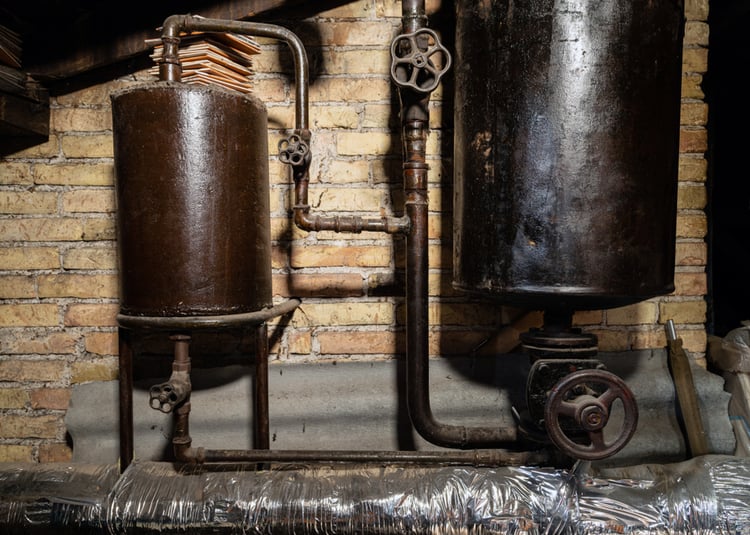Generally, when building owners invest in energy retrofits , the main goal is to save on utility bills. Energy efficiency can also help homeowners comply with climate laws and regulations, such as Local Law 97 of 2019 in New York. However, there is a lesser-known benefit of energy efficiency that is just as important: making buildings safer.
When the energy used by a building does not fulfill its intended purpose, it can cause accidents. For example, electrical current can leak from a wire with damaged insulation and this can cause electrocution or start a fire. In general, as a building's energy consumption increases, the potential damage that energy can cause also increases. Here we will discuss three examples of how energy efficiency makes buildings safer.
Get a professional energy audit: save on utility bills, reduce emissions and make your building safer.
Old, inefficient heating systems can be dangerous for building occupants

Many buildings rely on combustion heating systems that use natural gas or fuel oil, as they have a lower operating cost than resistance heaters. However, this means you must burn fossil fuels directly inside your building. If heat production and the resulting combustion gases are not controlled, they can endanger everyone in the building.
Older boilers and furnaces have higher energy consumption, especially when they are not properly maintained. We must not forget that combustion also produces many harmful gases, which must be removed from the heating system before they spread inside. This includes carbon monoxide, a highly dangerous gas that can cause loss of consciousness and death at an air concentration of just 1%.
- Inefficient space heaters consume more energy, which means they also produce a greater volume of combustion gases.
- As boiler and furnace components wear out over time, the risk of flue gas leaks also increases.
Electric resistance heaters can keep indoor spaces warm without burning heating oil and natural gas, but their operating cost is very high. In this case, the increase in electricity bills will largely exceed your gas savings. By using a combination of electric heat pumps and renewable energy, you can remove combustion from your building while keeping costs down.
An efficient building envelope protects occupants from extreme heat and cold

When your building is well insulated, you save on HVAC costs year-round. Insulation acts as a barrier against external heat gain during the summer and internal heat loss during the winter. You should also make sure the building envelope is free of air leaks, as they can cause a lot of heat gain and loss. An insulation upgrade is much less effective unless you also address air leak issues.
An efficient building envelope doesn't just reduce heating and cooling costs. When outdoor temperatures reach extreme levels, the thermal envelope also acts as a protective barrier for occupants. This is especially useful when HVAC systems are disabled by a blackout:
- An airtight and well-insulated building can maintain an adequate interior temperature for longer, providing effective shelter for occupants.
- A building with faulty insulation and leaky windows experiences a rapid change in temperature when HVAC systems go down, and this can be dangerous during a heat wave or winter storm.
An efficient building envelope also gives building occupants more control over indoor temperatures, and a properly sized heating system is enough to keep them comfortable. On the other hand, when a building cannot reach adequate temperatures on its own, occupants are more likely to use portable heaters for additional heat. These devices can be dangerous, especially when not used correctly, and one of them started the Bronx Fire in January 2022.
The Safety Benefits of LED Lighting

Many LED upgrade projects are completed with the goal of saving electricity and often achieve a payback period of less than three years. Considering many LED products last more than 10 years, upgrading is an excellent investment. However, LED lighting also brings many safety advantages, and the following are some examples:
- As LED luminaires have lower energy consumption, they also dissipate less heat. This means they are less likely to cause burns or start a fire.
- Unlike conventional light bulbs, LEDs can be designed without using glass and other fragile materials. This makes them unbreakable and safer to use.
- Thanks to their low consumption, LEDs can also run on reserve power for longer, which is a big advantage during a long blackout.
LED lighting is an excellent investment in most buildings, considering its benefits and quick payback period. When building owners perform energy audits, the list of recommendations almost always includes an LED upgrade.

